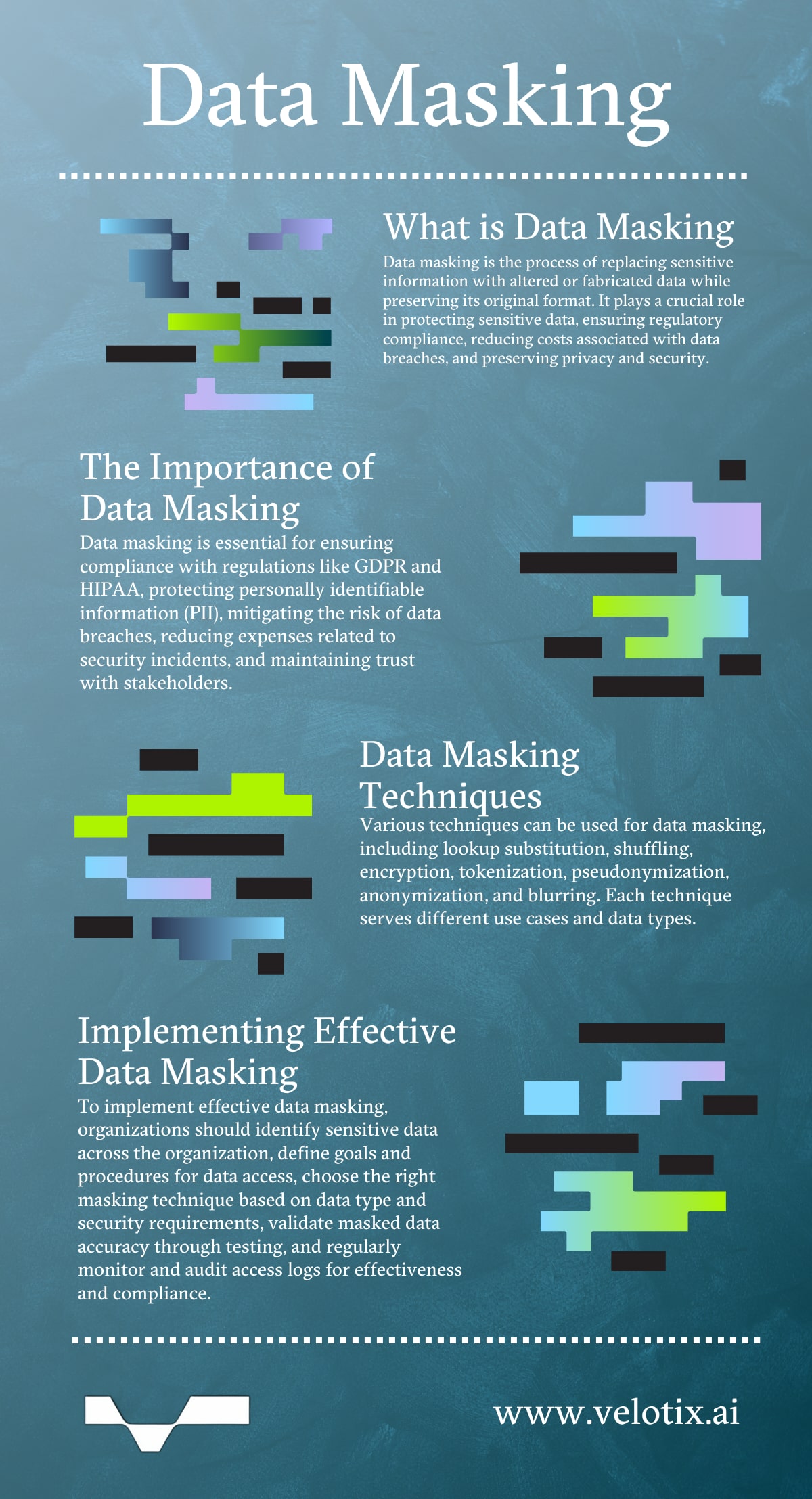What is a Data Masking?
As organizations increasingly collect, store, and use vast amounts of data, data masking has taken on critical importance. The technique protects sensitive information by replacing it with altered or fabricated data without changing its original format and structure. It’s often used when data needs to be shared with third-party businesses or individuals that don’t need access to sensitive personal identifiable information (PII). Data masking is an effective way to prevent data breaches and mitigate the risk of data exposure.
Another benefit of data masking is helping organizations comply with data protection laws and regulations like the General Data Protection Regulation (GDPR) and Health Insurance Portability and Accountability Act (HIPAA) that require businesses to protect PII from unauthorized access. It can also help reduce costs and reputational damage associated with data exposures or breaches, which can be significant.
Why is Data Masking Important?
In today’s tech-driven business environment, data is vital to building applications and software and achieving a competitive advantage. That makes it crucial for organizations to supply easy access to dataflows without compromising privacy and security. Together with protecting PII from unauthorized access, data masking is essential in four key ways:
Compliance: Many government and industry regulations require organizations to protect PII from unauthorized access. Data masking ensures regulatory compliance when using and sharing sensitive data for business purposes.
Security: Cyber attacks and data breaches are a growing concern for organizations of all sizes. In 2022, more than 422 million individuals were affected by a breach or attack. Data masking helps mitigate these risks by ensuring sensitive data isn’t visible to unauthorized users.
Cost Savings: The average cost of a data breach is US$4 million. Data breaches and other security incidents can result in significant data recovery and remediation costs. Data masking helps reduce these expenses by minimizing the amount of exposed sensitive data.
Privacy: Data masking removes any trace of personal identifiers that could lead bad actors to a specific person or entity. It helps build trust with customers, clients, and other stakeholders. It can also prevent reputational damage in the event of a cyber attack or breach.
Data Masking Techniques
Data requiring data masking includes PII, protected health information (PHI) like medical histories and lab results, credit or debit payment card information (PCI-DSS), and intellectual property (IP). Data masking can be achieved through various techniques, such as:
Lookup substitution: Replacing sensitive data with random alternative values that mimic the original data’s format and length.
Shuffling: A method best suited to larger datasets, shuffling scrambles the order of data without changing its unique content. The real values remain but are assigned to different elements, making it difficult to identify the original data.
Encryption: Transforming data into an encoded format that can only be decoded with a password or other decoding key.
Tokenization: The exchange of sensitive data for non sensitive data (tokens) that have no meaning on their own but can be used to retrieve the original data when needed.
Pseudonymization: Switching original data like a name or email with an alias.
Anonymization: Allows you to encode identifiers that connect individuals or entities to masked data, protecting user privacy while preserving data credibility.
Blurring: Altering the value stored in the database with a defined range of values available.
Format preservation, data integrity, legacy system compatibility, and complexity are some of the challenges associated with data masking. Data masking tools make accessing or exploiting data more difficult for unauthorized users. They also streamline the process of preserving data integrity, masking PII, controlling access, supporting compliance, and providing data audit trails. Combined with data masking best practices, data masking tools help organizations protect sensitive data while still allowing needed access.

Data Masking Best Practices
Organizations should set up a data masking standard that incorporates data masking best practices to ensure compliance and to protect PII from unauthorized access. The standard offers a framework for choosing the right masking techniques, tools, and methods to meet industry best practices and applicable laws and regulations. A data masking standard includes components like data classification, masking techniques, tool selection, role definition, and testing and validation. Many organizations use irreversible data masking methods that prevent data from being transformed back to its original version.
Proven data masking best practices include:
Data discovery: Before you can protect sensitive data, you must first identify it. This detailed record of organization-wide data typically includes PII, financial data, healthcare data, and other types of confidential information.
Developing a data masking strategy: Security directors or other parties responsible for figuring out sensitive data availability should define the goals, scope, and procedures, such as data access, retention, and destruction for data masking.
Choosing the right masking technique: Type of data, security requirements, usability, performance, and cost all factor into selecting a good masking technique. Organizations should choose the approach that best suits the data and use case.
Test data masking: Masked data must be accurate and usable. Data masking testing is conducted by creating test scenarios, validating masked data, conducting data quality checks, and testing data access.
Monitoring and auditing: Monitoring, auditing, and reviewing access logs, user authentication, security reports, and other reports must be done to ensure the chosen data masking techniques are working effectively and that there are no data leaks or security breaches.